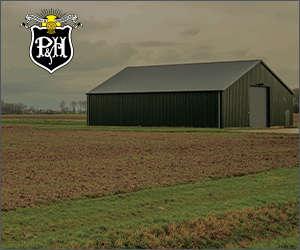Light at the end of the tunnel?
NEW FUSARIUM HEAD BLIGHT RESEARCH BRINGS HOPE
within a few years, SeCan and Advantage Seed Growers will start selling varieties of hard red and soft white winter wheat developed by Dr. Lily Tamburic-Ilincic at the University of Guelph for Fusarium resistance.
“These two varieties compared well against control varieties for yield, quality under Ontario growing conditions and resistance to Fusarium,” says Tamburic-Ilincic. “All three traits must be taken into account to register new varieties in Ontario.”
Working with academic partners in Canada and Germany as well as Agriculture and Agri-Food Canada on these new varieties, Tamburic-Ilincic also developed wheat germplasm (a collection of genetic resources) that had even higher levels of resistance to Fusarium than the two registered varieties.
“Their yield was not enough to qualify them for registration,“ she says, “but we can use them to develop future crosses. This is extremely important because when we know the genetic traits of the parent plants, we can overcome certain breeding obstacles from the start.”
Tamburic-Ilincic’s new germplasm provides resistance to Fusarium thereby offering farmers protection from mycotoxins — the toxic chemicals produced by the Fusarium fungus. Among those mycotoxins is a particularly nasty individual called Deoxynivalenol or DON, which if consumed, can affect livestock health, welfare and productivity and the human immune system.
on the horizon
Tamburic-Ilincic’s objective is to get a few new lines out of future crosses that test well for yield, quality and resistance within a five to 10 year horizon. She notes, however, that her job is done once the variety is registered. It then takes the companies with the marketing rights a couple of years to multiply the seed, have it inspected and produce it in sufficient quantity for sale.
All this is important news. Fusarium head blight costs Ontario wheat producers over $200 million dollars in 1996, 2000 and 2004. As well, the threshold for DON in the European Union (0.75 ppm) and the US (1 ppm for finished wheat products for human consumption) is lower than in Canada (2 ppm for uncleaned soft wheat for non-staple foods). Canada must supply a clean product to retain its position in a competitive global market.
two-pronged approach
Assuming wet years and some level of contamination before these new products reach farmers, Tamburic-Ilincic approached the challenge from the angles of “How can we get rid of Fusarium once it’s taken hold in a field?” and “How can we monitor for it after harvest?”
In the first place, she tested the four fungicides (Folicure, Proline, Prosaro and Caramba) registered in Ontario to control Fusarium in artifically inoculated nurseries and found that they worked better on moderately-resistant wheat varieties than highly susceptible ones. She is now able to confirm that the resistance of the plant itself plays an important role in control. Planting resistant varieties and spraying with fungicides when needed provides the highest level of protection.
As for monitoring, her team has been experimenting with Near Infrared (NIR) technology. The infrared band is a set of electromagnetic waves between microwaves and visible light. NIR can penetrate much farther into a sample than mid-infrared radiation, which makes it very useful in probing bulk material with little or no sample preparation. It is commonly used in pharmaceutical, medical diagnostics, combustion research and cognitive neuroscience research. It is also extremely useful in food and agrochemical quality control, where it can replace human visual inspections in a fraction of the time.
“Fusarium-damaged kernels display changes in absorption and reflectance in visible and NIR light due to the growth of mycelium and grain decay,” explains Tamburic-Ilincic.
The time-saving is extraordinary. Instead of taking an hour to screen 20 grams of seed by eye with special lights, the machine can screen an equivalent amount in two minutes.
In a research facility, the additional benefit is that contaminated seed can be set aside and used to separate out susceptible genetics. At a commercial level, a time-saver is also a money-saver. The Canadian Grain Commission performs a visual inspection at delivery from farmers. These inspections involve taking a representative sample and examining several sub- samples — a process that could take hours.
“We still have to do extra calibration and confirmation tests before we can recommend this technology as a reliable method for identifying Fusarium,” says Tamburic-Ilincic. “And at $60,000 per unit, it’s not for individual farmers. But it can help provide a clean, healthy product to consumers and livestock, and that’s in everybody’s best interest.”
Funding for this project, titled “A Strategy to Improve Wheat Yield and Quality through Integrated Management of Fusarium Head Blight,” was provided in part by Grain Farmers of Ontario, SeCan, Bayer CropScience and the Ontario Ministry of Agriculture, Food and Rural Affairs.
Additional funding was provided by Agriculture and Agri-Food Canada through adaptation programming. In Ontario, adaptation programs are administered by the Agricultural Adaptation Council. •






















